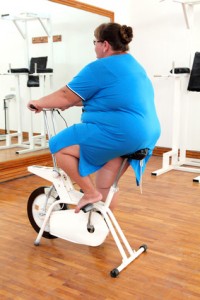The Look AHEAD trial funded by the National Institutes of Health has found that lifestyle changes have been effective in reducing disability in people with type 2 diabetes.
This article appearing on Nurse.com indicates that the risk of losing mobility in overweight or obese adults with type 2 diabetes was nearly halved with weight loss and increased physical fitness.
Look AHEAD (Action to Health in Diabetes) is a randomized clinical trial that is intended to figure out whether losing weight has an effect on the risk of developing cardiovascular diseases in overweight and obese people who have type 2 diabetes.
The study found that a group of these adults who attended meetings to help them achieve and maintain weight loss through diet and exercise were much more mobile than those who did not receive this intervention. Mobility is important for quality of life, allowing them to live independently rather than in a nursing home, for example, and also helps reduce healthcare costs.
Beginning in 2001, a total of 5,145 participants were randomly assigned to either an intensive lifestyle intervention group (ILI) or a diabetes support and education group (DSE). Participants receiving the intervention attended group and individual meetings to achieve and maintain weight loss through decreased caloric intake and increased physical activity. The DSE group attended three meetings each year that provided general education on diet, activity and social support.
To assess mobility and disability, participants rated their ability to carry out activities with or without limitations. Included were vigorous activities such as running and lifting heavy objects and moderate ones such as pushing a vacuum cleaner or playing golf. Participants also separately rated their ability to climb a flight of stairs; bend, kneel or stoop; walk more than a mile; and walk one block. Both groups were weighed annually and completed a treadmill fitness test at baseline, after one year and at the end of four years.
After four years of the study, participants in the ILI group experienced a 48% reduction in mobility-related disability compared with the DSE group, and 20.6% of ILI participants reported severe disability compared with 26.2% of participants in the DSE group. Likewise, 38.5% of those in the ILI group reported good mobility, whereas the rate was 31.9% in the DSE group. Weight loss was a slightly stronger predictor of better mobility than improved fitness, but both contributed significantly to the observed reduction in risk.
“This study highlights the value of finding ways to help adults with type 2 diabetes keep moving as they age,” Mary Evans, PhD, project scientist for the study, said in the news release. “We know that when adults lose mobility, it becomes difficult for them to live on their own, and they are more likely to develop more serious health problems, increasing their healthcare costs.”

